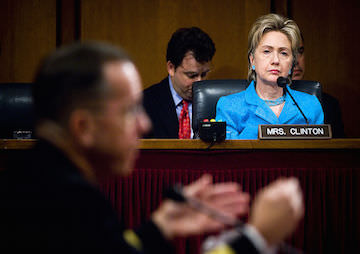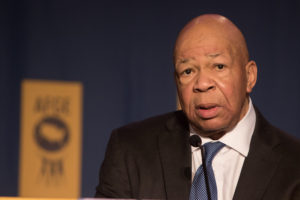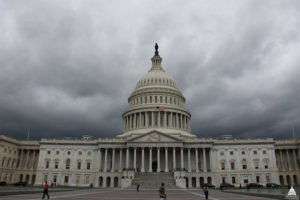Which ‘Senior Official’ Smeared Hillary Clinton?
In the aftermath of that famously discredited New York Times story about a "criminal referral" regarding Hillary Clinton's emails, a few important questions stand out among many that remain unanswered.

In the aftermath of that famously discredited New York Times story about a “criminal referral” regarding Hillary Clinton’s emails, a few important questions stand out, among many that remain unanswered.
Exactly who told Times reporters Michael S. Schmidt and Matt Apuzzo that the referral to the Justice Department — concerning whether information in her emails that wasn’t classified should have been — was a matter for criminal investigation? And when will the Justice Department track down, reveal, and discipline those who made these false statements to the Times and later to other news outlets?
These unpleasant questions arise from the Times editors’ explanation of an error that is enormously troubling (and the most consequential of several substantive mistakes littered throughout Schmidt and Apuzzo’s article, as catalogued superbly by Kurt Eichenwald in Newsweek). Never was there any criminal referral, only a “security referral” prompted by the appearance of retroactively classified material in a sample of Clinton emails released by the State Department.
In short, Clinton did nothing wrong, and the ensuing journalistic firestorm was, in reality, no more than a boring bureaucratic dispute over what should or should not be kept secret.
Yet determining who did this is important because — if we accept the editors’ version that the reporters’ sources misled them — one or more federal officials evidently tried to smear a presidential contender with a falsified leak, under cover of anonymity. That may or may not be a federal crime, but it should be a firing offense at the very least. And the public has a right to know if officials in the nation’s top law enforcement agency tried illicitly to influence a national election.
In the lengthy post-mortem published by Times public editor Margaret Sullivan on July 27, which delineated the damaging “mess,” she quoted executive editor Dean Bacquet, who told her: “You had the government confirming that it was a criminal referral.” Deputy editor Matthew Purdy offered further detail on the anonymous figures who led Schmidt and Apuzzo astray. “The reporters had what Mr. Purdy described as ‘multiple, reliable, highly placed sources,” wrote Sullivan, “including some ‘in law enforcement.'” I think we can safely read that as the Justice Department.
That does seem a very safe assumption, partly because Apuzzo, a Pulitzer Prize-winning AP reporter, joined the Times almost two years ago to cover Justice, while Schmidt has covered the FBI, an agency overseen by Justice officials. Both would have access to multiple, highly placed sources in law enforcement, although whether those sources are “reliable” is now open to serious doubt.
Of course, there was at least one other obvious source behind this story, as Sullivan mentioned in passing: “The story developed quickly on Thursday afternoon and evening, after tips from various sources, including on Capitol Hill.” With absolute safety, that generic reference should be read as the House Select Committee on Benghazi, chaired by Rep. Trey Gowdy, R-S.C., and controlled by the Republican majority — an outfit that has provided multiple, unreliable, and slanted leaksto Schmidt and his Times colleagues, which the paper has eagerly disseminated.
Rep. Elijah Cummings, D-Md., the select committee’s ranking Democrat, who immediately corrected the inaccurate “criminal referral” story, righteously blasted his Republican colleagues. “This is the latest example in a series of inaccurate leaks to generate false front-page headlines — only to be corrected later — and they have absolutely nothing to do with the attacks in Benghazi or protecting our diplomatic corps overseas,” he told The Hill newspaper. Clearly, Cummings intended to indicate that this latest leak came from the select committee’s members or staff.
But the unethical conduct that has apparently become habitual around Gowdy is a matter for the House to handle – not that its Republican majority ever will. Dealing with the misconduct of the government official or officials who leaked the phrase “criminal referral,” however, is an issue that only the Justice Department itself can address. Perhaps the person or persons responsible will do the right thing and step forward. If not, the department’s own inspector general should open an investigation to uncover the truth.
Lingering suspicion that anyone in government would so blatantly violate the public trust is enough to undermine confidence in the department’s law enforcement mission. Smearing a former secretary of state now running for president isn’t “justice.” And this isn’t a situation Attorney General Loretta Lynch — or President Obama, for that matter — should tolerate.
Independent journalism is under threat and overshadowed by heavily funded mainstream media.
You can help level the playing field. Become a member.
Your tax-deductible contribution keeps us digging beneath the headlines to give you thought-provoking, investigative reporting and analysis that unearths what's really happening- without compromise.
Give today to support our courageous, independent journalists.






You need to be a supporter to comment.
There are currently no responses to this article.
Be the first to respond.